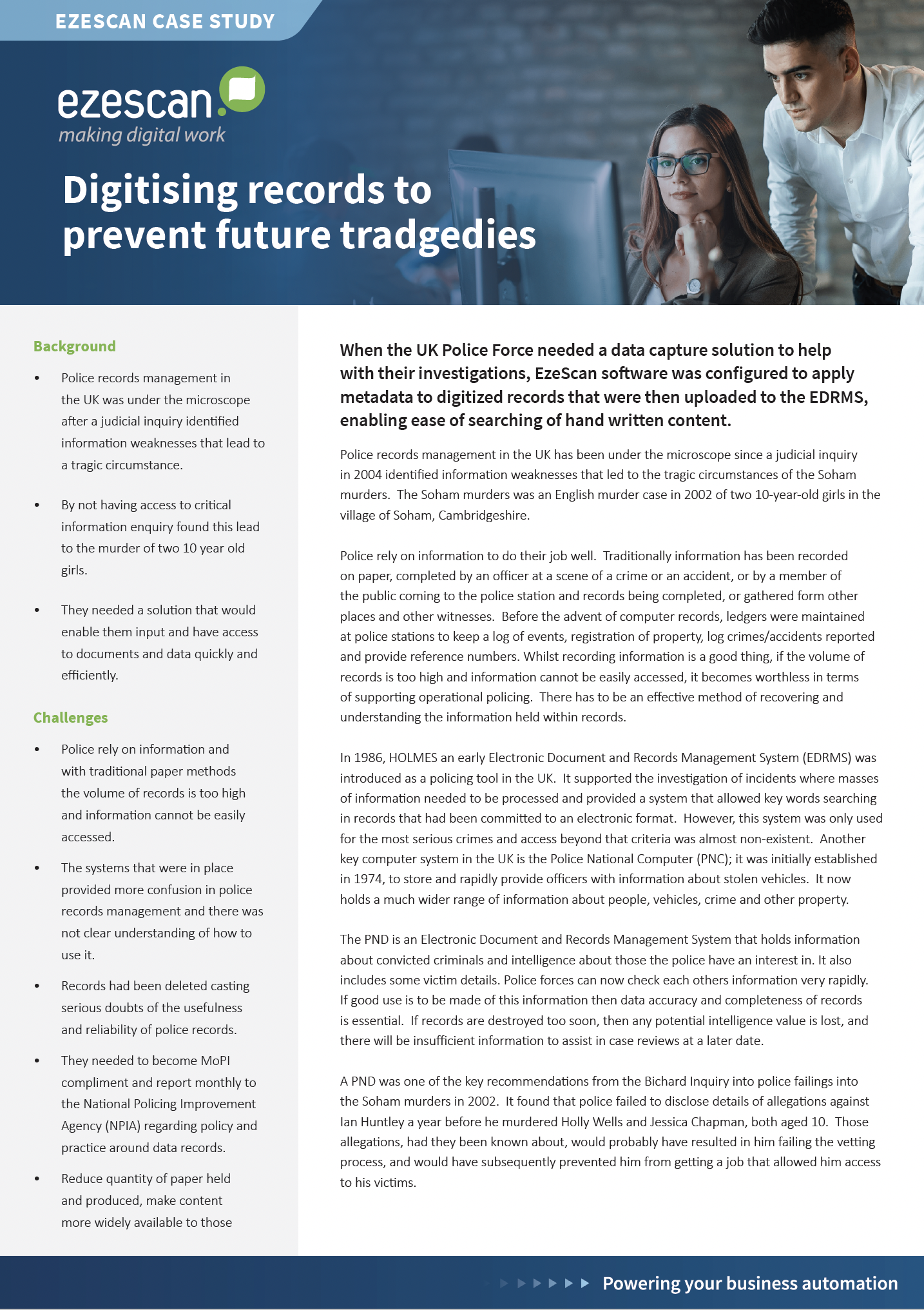You are here
UK Police Case Study

How EzeScan software helped the UK Police Force to digitise paper records to help prevent future tradgedies.
About UK Police
UK Police
Industry:
Solution:
Police records management in the UK was under the microscope after a judicial inquiry identified information weaknesses that lead to a tragic circumstance.
By not having access to critical information enquiry found this lead to the murder of two 10 year old girls.
UK Police Force needed a solution that would enable them input and have access to documents and data quickly and efficiently.

When the UK Police Force needed a data capture solution to help with their investigations, EzeScan software was configured to apply metadata to digitized records that were then uploaded to the EDRMS, enabling ease of searching of hand written content.
When the UK Police Force needed a data capture solution to help with their investigations, EzeScan software was configured to apply metadata to digitized records that were then uploaded to the EDRMS, enabling ease of searching of hand written content.
Challenge:
Police rely on information and with traditional paper methods the volume of records is too high and information cannot be easily accessed.
The systems that were in place provided more confusion in police records management and there was not clear understanding of how to use it.
Records had been deleted casting serious doubts of the usefulness and reliability of police records.
The UK Police department need to become MoPI compliment and report monthly to the National Policing Improvement Agency (NPIA) regarding policy and practice around data records.
Key requirements were to reduce quantity of paper held and produced, make content more widely available to those who need and have authority to access, ensure paper records are maintained in a secure environment. Change the culture from storing paper to scanning and making better use of content.
Previous external scanning service had left the Police force with scanned records that had been linked to wrong file and physical papers were returned misfield or missing causing additional work
Solution:
EzeScan Data Capture solution was implemented. The software was configured to apply metadata to digitized records enable ease of searching of hand written content.
Large scanned files were separated into smaller component parts making the end product more user friendly e.g. statements were separated from interview notes.
Files would then be uploaded into an EDRMS preventing the need to send large email files across networks.
Results:
Scanning records reduced the demand on storage spaces, enabled rapid viewing of records and reduced the costs associated with storage and retrieval.
The Force retained complete control over the records it created.
The Force was able to make use of the content of records at any time they needed. It allowed for more efficient searching of the record content and records linked to an inquiry can be found quickly and relevant intelligence extracted.
Improved security was achieved by transferring documents electronically across the organization rather than manually.
